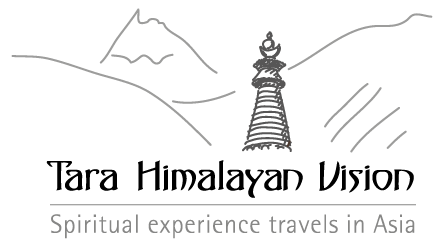Frequently Asked Questions
Prepare for Nepal
About Nepal
About Nepal
Visa & customs
TOURIST VISA
| Visa Facilitation | Duration | Fee |
| Multiple entry | 15 days | US$ 30 or equivalent convertible currency |
| Multiple entry | 30 days | US$ 50 or equivalent convertible currency |
| Multiple entry | 90 days | US$ 125 or equivalent convertible currency |
For online Visa Application form please visit Nepal Immigration website.
You will then get a receipt which you have to produce, along with original documents, before immigration officials upon your arrival at Tribhuvan International Airport. On Arrival Visa can be optained at the Tribhuvan Internatinal Airport.
VISA BEFORE ARRIVAL
You can choose to have a visa arranged from out of your own country.
In that case contact the Nepali Embassy or Consulate in your country.
For people from Belgium/Netherlands and Luxembourg this is the link.
(Note there are many websites that arrange a visa for you but then you need to be an extra fee – look always to the original website of the Nepali Embassy)
FREE VISA
- Children below 10 years of age obtain visa free of charge
- Free visa for 30 days is available only for nationals of SAARC countries. However, for extension of visa for SAARC nationals, the rule is same as that of other nationals.
- Indian nationals do not require visa to enter into Nepal.
FOR VISA EXTENSION
CUSTOM FORMALITIES
CUSTOMS
What to do before you leave to Nepal?
0 Inform your bank before you leave to Nepal.
o Inform your health insurance you are travelling to Nepal.
o Leave information behind for your friends and family where they can reach you.
How can I pay in Nepal?
Currency
The Nepalese Rupee is the currency of Nepal. Our currency rankings show that the most popular Nepal Rupee exchange rate is the NPR to GBP rate. The currency code for Nepalese Rupees is NPR. Link to currency converter.
Banking and Foreign Exchange
Payment in hotels, travel agencies, and airlines are made in foreign exchange.
What is the best time in the year to travel to nepal?
Check the weather in Nepal today.
The Climate in Nepal
The seasons in Nepal are pretty much the same as Europe, opposite of the Australian seasons. In January it’s cold, while in July you could make do with shorts and t-shirt. The climate of Nepal is moderate which means the winters are dry and the summers are hot. But because of the huge range in altitude and landscape, climate of Nepal differs significantly throughout the country. Generally, monsoon season lasts from around the end of June to the end of August. About 80 per cent of the rainfall occurs during this period throughout the country but the remainder of the year is dry. Spring (March to May) and autumn (September to November) are the most pleasant seasons. In winter (December, January, and February) temperatures drop down with a high level of snowfall in the high mountain areas. Summer, monsoon and late spring temperatures range from 28ºC (83ºF) in the hills to more than 40ºC (104ºF) in the Terai (southern plains). In winter, average maximum and minimum temperatures in the Terai range from a brisk 7ºC (45ºF) to a mild 23ºC (74ºF). The central valleys experience a minimum temperature but not often falling below freezing point and a chilly 12ºC (54ºF) maximum during the winter. Kathmandu Valley has a mild climate most of the year. Summer temperatures range from 67-81°F (19-27°C), and in winter temperatures are between 36 and 68°F (2-20°C). During the monsoon season in August, the average rainfall is between 7.8-14.7 inches (200-375mm) in Kathmandu. May and June can be very hot and humid until the monsoon rains. In spring (March to April) and autumn (October to November) the temperatures are pleasant with occasional short bursts of rain, while November to February are dry, but can be very cold, especially at night.
Best time to visit Nepal
Spring (March, April, May) and autumn (Sept, Oct, Nov) are the best time of the year to visit Nepal. During this time, the weather is pleasant with efficient sunlight and warmth. The sky is clear which means that you can truly enjoy the remarkable Nepalese landscape complete with the Himalayan vista. During the monsoon (June, July, Aug) although there will be no problem for trekking, the issue could be of less visibility and rain. But, for a keen botanist, monsoon is a blessing as the higher valleys, mountains and meadows blossom with flowers and abundant vegetation. You can trek in winter (Dec, Jan, Feb) as well especially in the hilly regions but as you reach higher elevations it is much more colder with snow-fall. If you don’t necessary enjoy crowds, trekking during the monsoon or winter or choosing more solitary trekking destinations could be your options. Note that due to global warming there has been a change in the regular climate worldwide and Nepal is no exception. Please be open to unpredictable weather conditions as well.
Which electricity power can I use in Nepal?
In Nepal 220-240 volts/50 HZ power is used. Sockets usually take plugs with three round pins. The plugs can be both small and large in size. Some sockets take plugs with two round pins as well. It is important that you have both a voltage converter and a plug adapter in order to use your electrical appliances in Nepal. We recommend getting a universal adapter and converter kit if you are planning to bring many different electrical items. All laptops and some electric razors take universal voltages. Check your equipment to be sure. Voltage fluctuation is very common in Nepal and it is advised that you use an adapter with quality power surge protector for your electronics. Also, in dry seasons there is power outage (load shedding) that goes on for long hours. However, hotels and businesses cover their electrical needs via fuel cells and generators.
What do I need to bring?
You can download and print the list: equipement normal travel
Which kind of travel insurance do I need?
A travel-insurance policy that covers theft, loss and medical problems is best for travelling in Nepal. There are a wide variety of policies available, so check the small print carefully. Make sure you are covered for adventure activities and high altitude. Since you reach above 4000 meters on quite a few treks in Nepal, it is best to choose a policy that covers medical and emergency repatriation, including helicopter evacuation for trekkers and general medical evacuation. Also understand that most medical treatment and facilities/hospitals must be paid for at the point of delivery of the patient. So it’s wise to choose a policy that pays doctors or hospitals directly rather than you having to pay on the spot and claim later.
Health information tips
LOCAL CLINIC
Will my children enjoy Nepal?
Of all the Asian countries, Nepal is one of the easiest to travel to with children. That’s why many people do it nowadays. It is crucial that you have a good travel plan. Make sure the travel times are not too long and that you include some exciting activities for your children as well. But don’t worry, there are lots of interesting things to see and do in Nepal, for people of every age.
o Take them on a mountain bike trek through the villages and mountains around Pokhara.
o Go on a small or big rafting trip.
o Go paragliding and enjoy a stunning view of the Anapurna.
o Go on a big or a small trekking, adapted to your children’s age. For small children, we can provide a porter to carry them. You may even see the mystic yeti…
o Your kids are strong teenagers? Then they might be up for a 160-metre bungee jump, the highest in the world.
o Spot wild animals like rhinos, deer, monkeys, elephants,…
o Make a trip on the river to spot crocodiles
o Stay at our favourite lodge, a place where they keep their own elephants. You can wash the elephant… or let the elephant wash you.
o If your children are old enough you can even do a one- or two-day jungle walk.
Take your kids to Swayanabunath, the monkey temple, and spot the many monkeys on your way up.
Prepare for a trek
What is the best time to trek in Nepal?
The trick to choosing when to start a trek is striking a balance between the period of best weather for the area you wish to trek and the crowds that this good weather attracts.
What should I bring on a trekking?
You can download and print the list (equipement for a trek)
Gradation in hiking/trekking level
There are many different treks to suit your budget, fitness level and available time, but most walks fall into the following three categories:
What are the golden rules I should know when I am going on trekking?
Never trek alone
What about ``AMS`` Altitude Sickness?
AMS (Acute Mountain Sickness) or altitude sickness is very serious and is not to be taken lightly. Some degree of altitude sickness may occasionally occur at or around 3,000m+. Tara Himalayan Vision takes great care with altitude acclimatisation.
Nice to know about Nepal
Useful Nepali phrases and expression
Learning a few of the basics is really opens up a country to the traveler. Just a little of the language will help you to get around, to meet people and to really deepen your experience of a culture. It shows the locals that you want to learn about them and care about their country and culture. So start with these basics…
| Nepali | English Translation |
| Namaste | Hello, Greetings, I bless the divine in you |
| Namaskar | The more respectful version of Namaste |
| Hajur | All purpose term meaning yes? Pardon, Excuse me? |
| (Tapaiilai) Kasto Cha? | How are you? |
| (Malai) Thik Cha | I am fine |
| Khana khannu bhaiyo? | Have you eaten? (used often as informal greeting) |
| Dhanybhad | Thank you |
| Tapaiiko naam ke ho? | What is you name? |
| Mero naam Ann-Marie ho | My name is Ann-Marie |
| Maaph garnuhos | Excuse me/ pardon me/ sorry |
| Maile bhujhina | I don’t understand |
| Maile bhujhe | I understand |
| Pheri bhetaunla | I hope we meet again |
| Mahango / Sasto | Expensive / Cheap |
| Ramro / Naramro | Good / Bad |
| Sapha / Phohar | Clean / Dirty |
| Thulo / Sano | Big / Small |
| Sajilo / Gahro | Easy / Hard |
| Thada / Najik | Far / Close |
| Chito / Dhilo | Fast / Slow |
| Tato / Cheeso | Hot / Cold (for food) |
| Garmi / Jaado | Hot / Cold (for weather) |
| Naya / Purano | New / Old |
| Dhani / Garib | Rich / Poor |
| Add ‘dherai’ to show ‘very’ | |
| Ex. Trekking dherai gahro cha | Trekking is very hard |
| Food adjectives | |
| Mitho / namitho | Tasty / Not tasty |
| Bhuteko | Fried |
| Umaaleko | Boiled |
| Noonilo | Salty |
| Gooliyo | Sweet |
| Amilo | Sour |
| Tito | Bitter |
| Piro | Spicy |
| Tarkari / Vegetables | Gajur / Carrots |
| Kaulee / Cauliflower | Bandakobi / Cabbage |
| Alu / Potato | Makai / Corn |
| Saag / Spinach | Kerau / Peas |
| Parsi / Pumpkin | Pyaaj / Onion |
| Lasun / Garlic | Kaankro / Cucumber |
| Simee / Beans | Coursani / Chili |
| Adhuwa / Ginger | Bhatamas / Soybean |
| Golbheraa / Tomato | Dhal / Lentil |
| Bhadam / Peanut | Kaju / Cashew |
| Mohar / Honey | Bhat / Rice |
| Dudh / Milk | Daihee / Yogurt |
| Pauroti / Bread (Loaf) | Chapati / Bread (flat round) |
| Tel / Oil | Noon / Salt |
| Chinni / Sugar | |
| Syaau / Apple | Keraa / Banana |
| Nariwal / Coconut | Angur / Grapes |
| Kagati / Lemon | Aanp / Mango |
| Suntalaa / Orange | Mewaa / Papaya |
| Masu / Meat | Andaa / Egg |
| Macha / Fish | Kukhura / Chicken |
| Kasi / Goat | Sungur / Pork |
| Kalo chiya / Black tea | Kagatiko chiya / Lemon tea |
| Dudh chiya / Milk tea | Adhuwa chiya / Ginger tea |
| Kalo coffee / Black coffee | Dudh chiya / Milk tea |
| Pani / water | Umaleko pani / Boiled water |
| Raksi / Alcohol | Toomba / Millet beer |
| Chyang / Rice beer | Ras / Juice |
| Ma ______ lagyo / lagena. | I feel / don’t feel ______. |
| Birami / sick | Bhok / hungry |
| Raksi / drunk | Thirkaa / thirsty |
| Khushee / happy | Dukha / sad |
| Thakai / tired | Alchee / lazy |
| Dar / scared | Nindra / sleepy |
| Jaado / cold | Garmi / hot |
| Tapaiilai ______ man parcha? | Do you like ______? |
| Malai ______ man parcha. | I like ______. |
| ex. Malai Nepali khanna man parcha. | I like Nepali food. |
| To express that you like to do something, use a verb, drop the ‘u’ and add ‘a’ | |
| ex. Malai aath ghanta sutna man parcha. | I like to sleep eight hours. |
| To express that you can do something, use a verb, drop the ‘u’ add ‘a’ and sakchu | |
| Ex. Ma kotha herna sakchu. | Can I see a room. |
| Malai ______ chahincha. | I need ______ . |
| Malai ______ chahindaina | I don’t need ______ . |
10 incredible things to know about Nepal
- Nepal is home to the world’s highest mountain, Everest at 8848m
- Nepal is the oldest country in South Asia
- Nepal has 8 of the world’s 10 highest mountains of the world
- Nepali Gurkhas have been recruited by the Britisch Army for 200 years
- Nepal still has a living Goddes, The Kumari
- Buddha was born in Lumbini, Nepal
- Nepal has more then 80 different ethnic groups who all have their own culture and language
- Yeti, the elusive snowman is believed to roam the mountains of Nepal
- Nepal has the thickest concentration of World Heritage Sites -more then 10
- Nepal is the only country that does not have a rectangular flag
Top 15 things to do in Nepal
- Boudhanath stupa
- EBC – Everest Base Camp trek
- Mustang
- Bhaktapur
- Anapurna Circuit trek
- Begnas Tal
- Chitwan National Park
- Lumbini, birthplace of lord Budda
- Sarangkot (mountainview around Pokhara)
- White-water rafting
- Nepali’s festivals
- Swayambhunath
- Mountainbiking around Nepal
- Canoying in Nepal’s waterfalls
- Nepal’s always laughing people
Top 15 things to do with children in Nepal
- Begnas Tal
- See the many monkey’s at Swayambhunath, monkey temple
- Horse riding around Pokhara
- Seeing a living Goddess, the Kumari, in Patan
- Family stay – sleep and live a few days at countryside between local people
- Small hike to Australian Camp – bigger children to Poon Hill
- Spot wild animals in Chitwan National Park
- Bazaar of Kathmandu
- The medieval city Bhaktapur
- Small White-water rafting
- Nepali’s festivals
- Children who are bigger paragliding
- Mountainbiking around Nepal
- Pokhara: visit bat cave in Pokhara
- Let them meet Nepal’s always laughing people
Yoga & meditation
Lu Jong, Tibetan Healing Yoga
Lu Jong is an old Tibetan practice of the tradition of Tantrayana and Bön. It is based on Tibetan medicine, which assumes that diseases are the consequence of an imbalance of the elements or humours. Through the combination of position, movement and breath Lu Jong can open physical channels and blocks in a soft way and mobilize misdirected energy. In this way our physical health, mental clarity and vitality are improved.
Tog Chöd, the wisdom sword
Tog Chöd is a combination of powerful physical exercises which are done with a wooden sword. The goal of the exercises is to reduce fear and expectation, to dissolve mental imprints and overcome negative emotions. Tog Chöd is a powerful technique for overcoming the state of thinking und for remaining in a quiet state of mind. This makes it an ideal practice before meditation.
Tsa Lung, traditional breathing exercises
Maaike can learn you Tsa Lung breathing exercises from the Tantrayana tradition. Tsa means channel, lung means breath. Yogis who are living in the mountains have been using these secret exercises for thousands of years. The exercises help to clean our channels and free them from old patterns and emotions to come closer to our true nature.
Find stilness with Mindfulness Meditation
During our travels we also make time to practice calm abiding meditation – also called Vipassana or mindfulness meditation – to bring peace and stillness to the mind. Maaike can explain you how to train your mind in nine stages and to get to know your true nature.
Get an inside in how your mind is functioning with Buddhist Psychology
During our travels we also make time to talk about how are mind is function and the 51 different mental stadiums. We talk how we can use them to influence our life in a positive way.





